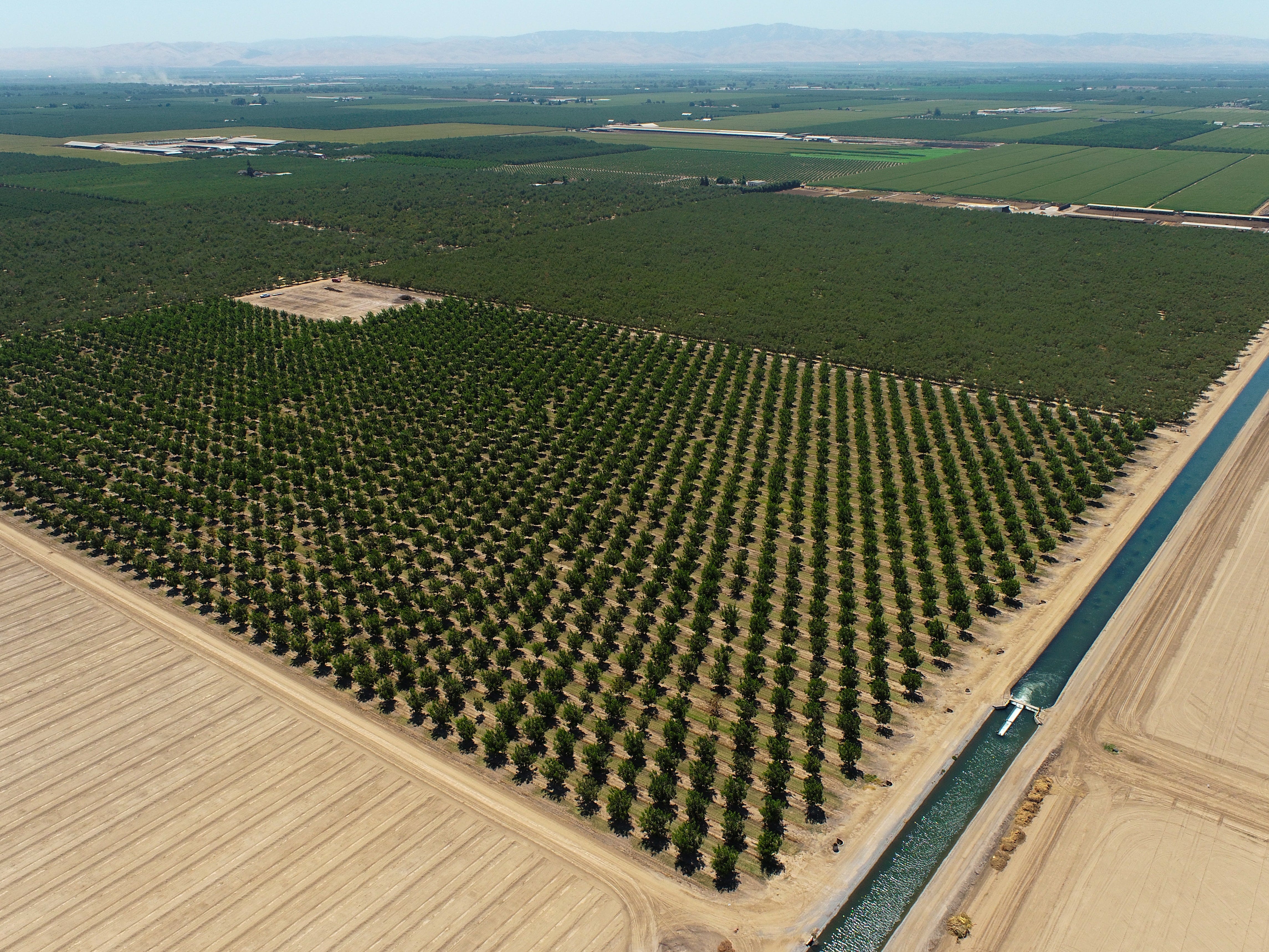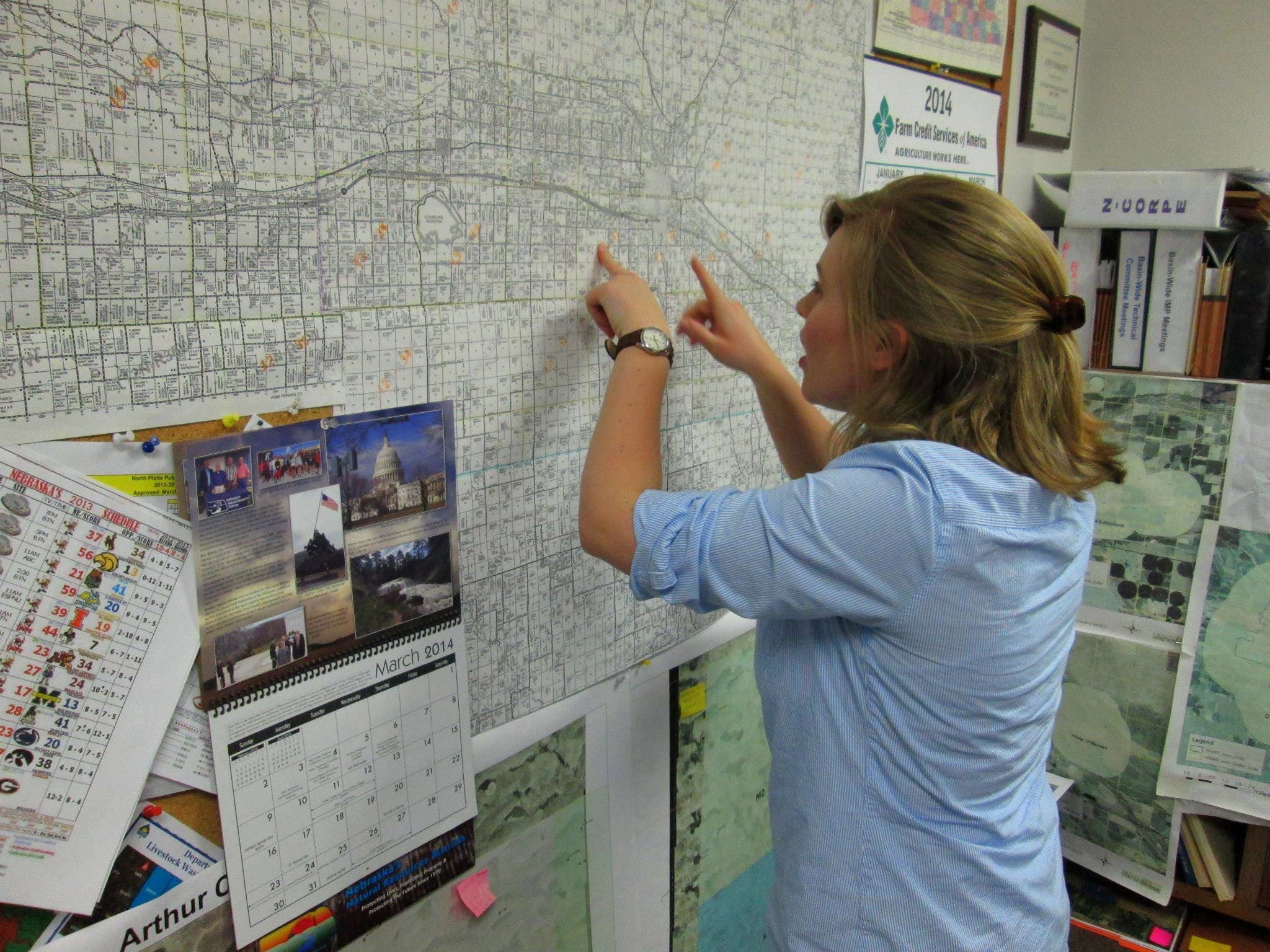How transaction costs price out small deals that could lead to big wins for agriculture
Spoiler alert: It’s not the price of water that’s costing growers large gains from water markets; it’s the transaction costs associated with it. Meeting high technical and legal standards often exceeds the price of water itself, pricing out smaller deals that, in aggregate, could substantially improve agriculture’s resilience to water-related production risk.

Water markets are powerful tools. They allow for the transfer of some or all of a water right between users, which typically changes the place where that water is used (e.g. downstream in a watershed) or what it’s used for (e.g. from wheat to grapes, rice to municipal water, corn to instream flow). A water market allows individuals to reallocate water resources, giving them more flexibility to cope with water scarcity than they would otherwise. And because agriculture accounts for approximately three-quarters of our annual water budget, they too account for the lion’s share of water trading activity.
Why we’re talking about this
In the western US, water is the key to life or death. Agriculture and our cities and towns wouldn’t exist without it. And we make water work out here: from nuts, fruits, and veggies in the summer to the leafy greens we eat in the winter. It’s easy to take for granted east of the Mississippi, but in the west, water is our lifeblood.

Because water is scarce, the motivation for efficient water trading is paramount. Without water markets, water rights are stagnant. Senior water rights could be tied up with the lowest-value uses in a region. Junior appropriators, who might be orchardists, or even cities, could go without water.
We have got to do everything we can to make water trading frictionless. Because today, water market frictions are pricing out smaller water deals — in volume, in price, and in duration — that, in aggregate, are costing farmers billions of dollars in drought mitigation.
Show me
Before Washington State’s adjudication in the Yakima Basin was over, transfers (also called “change applications” in Washington) were relatively easy. A transfer could be made by filing a request for the transfer before the adjudication court. Once filed with the adjudication court, a transfer was also evaluated and voted upon by a multi-stakeholder group composed of all major water users in the Basin, which had collaboratively developed criteria (known as the “box”) to give transfers a “thumb’s up” or “thumb’s down” vote. Then the transfer went to the adjudication court, where the stakeholder group vote was given considerable weight in the adjudication court’s decision. This process could be complete in about six to eight weeks.
But now that the adjudication is over, transfer applications go through the normal review process at the Washington Department of Ecology or the county Water Conservancy Board. Transfer applications are considered on a first-come, first-served basis. And with limited staff and resources, it’s typical for processing to take between nine months to over two years, according to Kelsey Collins, Statewide Trust Water Coordinator of the Department of Ecology.
That is a source of frustration for many water rights holders and professionals, says Peter Dykstra. Dykstra is a water rights attorney well-versed in water transfers; he’s done over a hundred of them. But in 2020, one of his clients awaited a decision on their water transfer application — a decision they still hadn’t received some 11 months later. Theirs was a one-year transfer and virtually identical to a transfer they had made the previous year and approved. Same applicants, same water, same terms: an identical transfer, but not an identical timeframe. In the end, there was simply no decision in the timeframe for the transfer. A wait period of nine to 24 months for an annual transfer doesn’t pencil.
The hidden costs of water trading
Let’s take a look at some of these hidden costs. When a person trades water, they need to:
- Determine the amount of water to trade (Will it be a drought year, wet year, normal year? What are their crop water requirements?)
- Identify an interested party with which to trade (In the economics field, we call these “search costs”. This is you calling your neighbors, your friends, talking to folks in your community, perusing Craigslist for water)
- Negotiate contract terms (Price or other compensation, volume, duration, who bears which risks and costs associated with the transfer)
- Go through a regulatory review process (Most regulatory agencies require that transfers cause “no injury or harm” to other water users)
And all of this presumes the person has confidence and trust in the process — that they don’t fear that the process will negatively affect them. Will their disclosures on Craigslist or water trading platforms be made public? What will be done with the price data? Will disclosures to the regulatory agency result in a reduction of their water right? Will pricing be determined fairly, or are they going to get hosed? It’s shocking how much — and how overlooked — distrust is an obstacle to water trading. But let’s set that aside. In fact, let’s set aside Items 1–3 altogether.
Let’s focus on the regulatory review and compliance aspect. Because this, without question, is the most difficult and important part of the process — and it’s the part that has a high degree of risk and, therefore, distrust.
What does this process entail? First, they have to prove they hold title to their water right, and that they have beneficially used it in recent years. Because water is a valuable resource, US western states require that water rights holders reasonably and beneficially use water; if they do not, they could lose some or all of their water right. The first step to a water transfer is therefore quantifying how much water you have available to trade: the amount you have on paper might not be what you’ve beneficially used recently. Enter in the technical and legal experts to help you maximize this quantity.
Next up, an injury review. Most water trading programs require that transfers do “no injury or harm” to third-parties, which could include existing municipal or industrial uses of surface or groundwater, or even environmental uses. If the transfer causes any impairment at all, such as reducing the reliability of another’s water right or reducing flows in a river, the transfers will be denied. Enter in more technical experts, meaning more money and more time, to help with this evaluation.
Finally, most transfers are subject to public comment, which can last up to two months. This is yet another waiting period before the deal is approved.
These regulatory compliance steps typically amount to a hefty tab and require extraordinary patience for a decision. Dykstra estimates that a typical water transfer’s legal and technical costs range $70,000-$100,000.
High legal and technical standards can make water trading a long, expensive process (but they don’t have to!). While such standards are necessary and important, they are a nonstarter for small-volume or short-term transfers. This is especially a challenge in drought-years, when water is scarcer, higher-value, and the need for it more urgent.
Clever solutions
There are myriad clever solutions to improve water markets, and the following is by no means a comprehensive list of what we’ve seen to date, much less what’s out there. But here are a few that make big gains:

Good data management. Many states do not have up-to-date records on water use or ownership, which results in costly and time-consuming efforts to validate and quantify a water right. A big step to improving the transfer process would be a water rights registry with standardized and comprehensive water use and ownership data, with stronger enforcement of reporting requirements. (This is why we created TAPP H2O, a water accounting platform that helps growers and water managers alike track water use relative to water rights.)
This may take time. In the meantime, hedging with an offset, or reserving a flat percentage of the water right from trade, has also been effective at saving time in the water right quantification process.

Clear checklists. Because all water is local and unique, all checklists will be unique too. These rules are typically informed by a strong understanding of the basin’s hydrology and infrastructure, community needs, and the context for water management, such as over-appropriation, stream depletion, or proneness to drought and scarcity, among others. A checklist may prohibit upstream transfers, prohibit transfers within particularly sensitive zones or habitats, set trading ratios, limit transfers between subbasins, or more. The checklist may be long (they usually are!), but they should be easily enough understood so that a person could go through it and figure out whether their transfer would be approved.
There are leaner versions of the above. If a checklist isn’t feasible, a rapid scoring or bucketing system could help expedite transfers.
Measure and learn fast. Moving from a case-by-case evaluation system to checklists can seem daunting and risky. The best way to manage this risk is to test them in a lease setting first. Measure the results and make adjustments to the rules as needed. Rest easy knowing that any mistakes will expire in a year, limiting potential damages of the new water market rules.
These kinds of solutions are proven to not only to reduce the time and money that growers spend on the transfer — but that regulatory agencies do too. Clear processes provide clarity to the applicants of what the regulator is looking for; tend to eliminate poorly matched deals, so that the regulator isn’t wasting time on a bad transfer; and provide a clear legal basis to the regulator for approval or denial, which ultimately leads to to faster review, higher consistency in decision-making, and fewer appeals.
TL;DR: Develop a systematic process for water rights validation and regulatory approval. Think about it in terms of getting pre-qualified before asking for a loan. Growers need to know if they can do this before actually starting the process. A clear process will also limit regulatory liability.
Conclusions
Remember, we’re only focused here on regulatory compliance aspects of water markets. We could further smooth the process by introducing tools to help with other steps in the transfer process, including forecasting, search, and contract negotiation. There’s a lot of work to do.
Fortunately, there’s reason to be optimistic. Water markets are regularly in the news (even if often misrepresented!). There is a growing community of water markets professionals to share lessons learned. Regulators burdened with lengthy transfer review processes are studying and investing in improvements.
And it’s a good thing. Mega-droughts, aridification, and new water management regimes are exacerbating the need for water reallocation. Markets are a powerful tool that do just that. They create new revenue streams to water users, incentivizing conservation that can be sold to other water users, including agricultural, municipal, or environmental uses. We need that conservation, because we have to make our water go farther as we face more and more severe droughts. Water markets help regional agricultural economies stretch the value of limited water to higher-value uses that create more jobs, more food, and more tax revenue.
As a society and industry, we need to ensure water markets are affordable and accessible to our growers. Let’s start by focusing on reducing transaction costs, through good water data, clear review processes, and iterative learning.
Let’s hear from you
- Do you have experience with a water market? What challenges do you face in trading water? I’d love to hear your thoughts — please contact me.
- Do you need help designing a more efficient water market? Send me a message on LinkedIn — we’d be happy to leverage our experience at Mammoth Water to help out.



